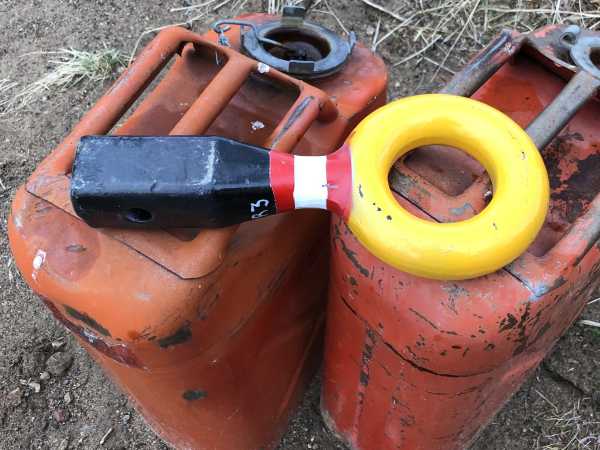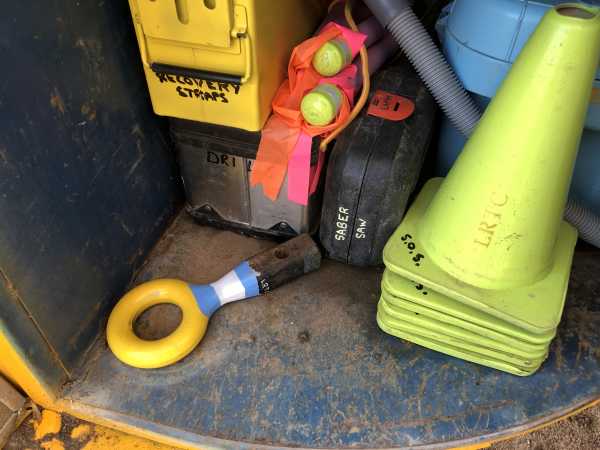
Anchor points for rescue systems have to be absolutely secure and fail-safe. When using vehicles as anchors, completely enclosed anchor points must be used such as closed tow eyes (or tow rings,) shackles and drawbar rings. Hitch balls are not suitable for anchor points as the strap or cable can come loose if the tension is inconsistent, and more importantly, hitch balls are not designed for winch type loading. They can break resulting in a missile and cable flying back toward the winch, causing significant damage and injury.
Drawbar rings are inserted into standard hitch receivers and when properly pinned provide a fail-safe anchor point for rescue systems. The rings are smooth and wide enough to prevent damage to straps that have been run through them.

Drawbar rings are stored in the lower front compartments of Rescue-1, Rescue-3 and the Special Operations Support Unit. In addition, a drawbar ring is located in Compartment 3 in the Incident Support Unit.

For complete information utilizing drawbar rings and other anchor systems, visit the Information Sheet,
Anchor Points.
More detailed explanations can be found on the Information Sheet,
Winch Procedures.
| 





